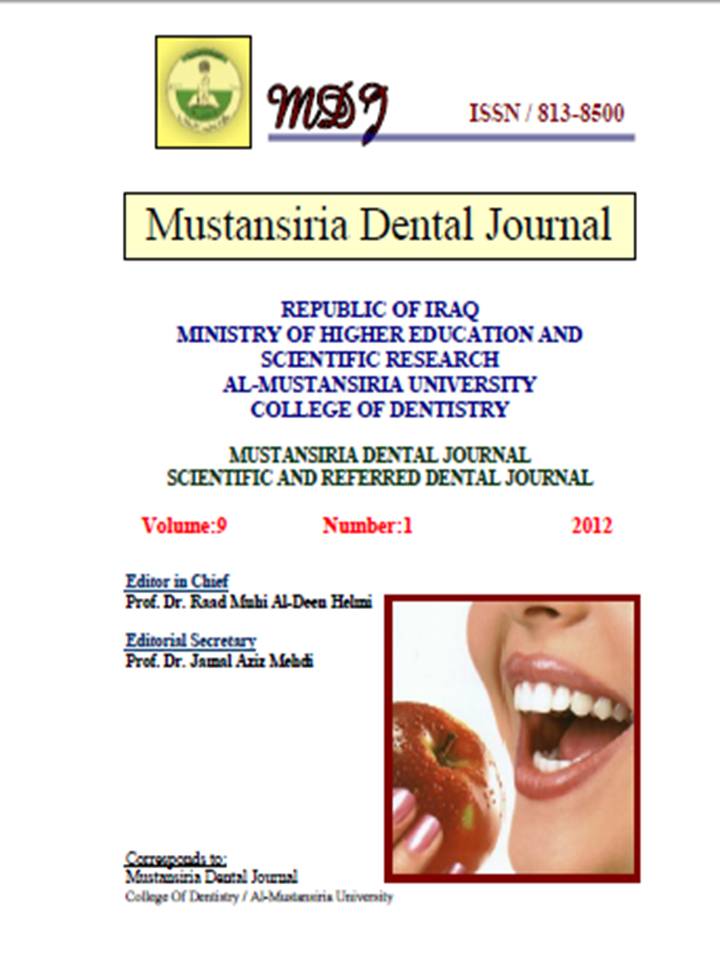Apical microleakage in root canals obturated with lateral compaction, warm vertical compaction and Gutta-Flow techniques (in vitro study)
DOI:
https://doi.org/10.32828/mdj.v9i1.236Keywords:
Key words: Apical microleakage, methylene blue dye, lateral compaction, warm vertical compaction, Gutta-Flow.Abstract
The sealing ability of root canal filling materials is crucial to the goal of
preventing reinfection via microleakage of microorganisms and their by-products.
Thirty palatal canals of 12mm length from extracted upper first molars were selected
then instrumented and divided into 3 groups. Group I was obturated with lateral
compaction technique, group II was obturated with warm vertical compaction
technique and group III was obturated with Gutta-Flow system. Except for the apical
2 mm, all other segments of roots for the 3 groups received two layers of nail varnish
and immersed in a methylene blue 2% and stored at 37Cº for 30 days. Under
stereomicroscope liner dye leakage was measured. No statistical difference was found
between lateral compaction, warm vertical compaction and Gutta-Flow sealing ability.

Downloads
Published
Issue
Section
License
The Journal of Mustansiria Dental Journal is an open-access journal that all contents are free of charge. Articles of this journal are licensed under the terms of the Creative Commons Attribution International Public License CC-BY 4.0 (https://creativecommons.org/licenses/by/4.0/legalcode) that licensees are unrestrictly allowed to search, download, share, distribute, print, or link to the full texts of the articles, crawl them for indexing and reproduce any medium of the articles provided that they give the author(s) proper credits (citation). The journal allows the author(s) to retain the copyright of their published article.
Creative Commons-Attribution (BY)








